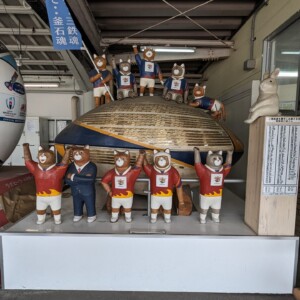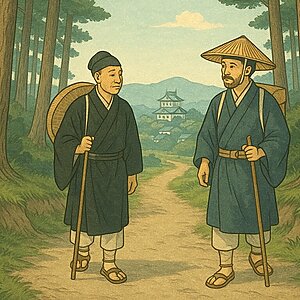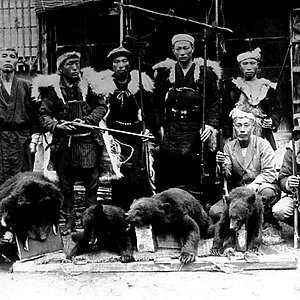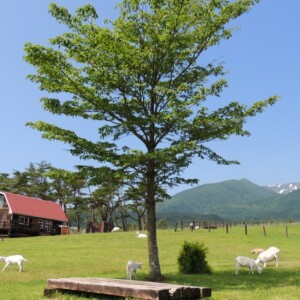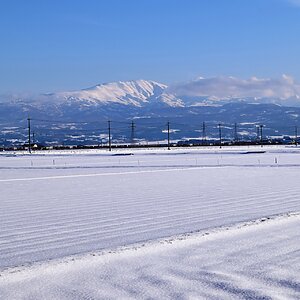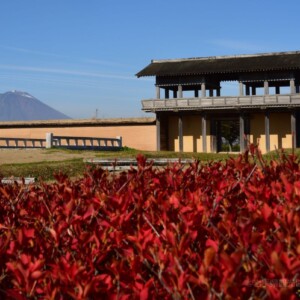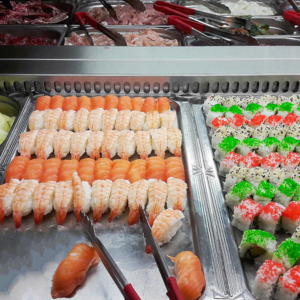
This is how Fukushima Transportation was born and descendants of Fukushima Transportation founder took the Iizaka Line.
table of contents
The Iizaka Line, a railway line operated by Fukushima Transportation Co., Ltd. that runs through Fukushima City in Fukushima Prefecture , connects Fukushima Station and Iizaka Onsen Station.
How did Fukushima Transportation and the Iizaka Line come about?
What is the Fukushima Transportation Iizaka Line?
The Iizaka Line is a 9.2km line operated by the private railway company Fukushima Kotsu, which runs from Fukushima Station in Fukushima City to Iizaka Onsen Station, covering 12 stations. It is
nicknamed the "Iizaka Train" or "Iiden."
features the English characters
GOOD TRAIN ," a play on the Japanese character "ii" (good) in Japanese get to Iizaka Onsen, as its name suggests .
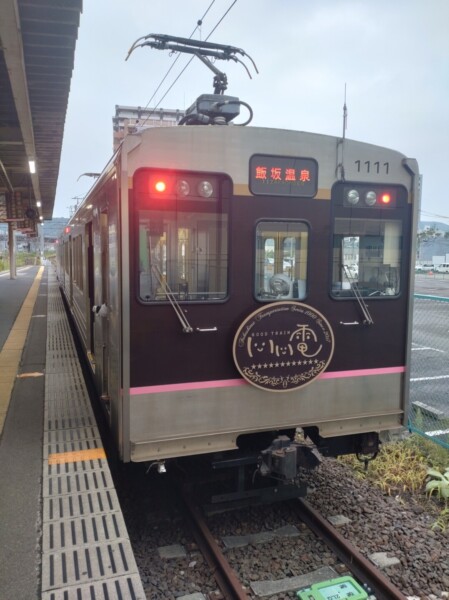
The trains are the 1000 series trains, formerly owned by Tokyu Corporation (now Tokyu Corporation), which have been in operation in the Tokyo metropolitan area since 2017.
The 7000 series trains that preceded the 1000 series were also introduced by Tokyu.
Fukushima Transportation's direct predecessor, Shindachi Railway
The Iizaka Line opened exactly 100 years ago, in 1924 during the Taisho era.
However, the plans for a railway connecting Fukushima Station and Iizaka Onsen, as well as the roots of Fukushima Transportation, the company that currently operates the Iizaka Line, date back much further, so we will briefly introduce them here.
In 1887 during the Meiji period, a company called Nippon Railway opened the railway, which is now the JR Tohoku Main Line, and Fukushima Station opened.
Local leaders then planned a railway linking Fukushima Station with Iizaka Onsen.
Initially, a lack of funds prevented the project from coming to fruition, but the promoters, influential people from the local Shinobu District (present-day Fukushima City, etc.) and Date District (present-day Date City, etc.), teamed up with well-known businessman Amemiya Keijiro and others to make the project a reality.
On a personal note, one of the founders, a prominent figure in Date County, was my maternal ancestor four generations ago, and both my great-grandfather and grandfather were from Date.
Also, by coincidence, my father was from the area along the Iizaka Line.
So, although I've never lived in Fukushima Prefecture, I've visited it many times and feel a close connection to the Iizaka Line.
In 1907, the Shintatsu Tramway Company was granted a charter, and in 1908, a line was opened that ran north from Fukushima Station on the east side of the Tohoku Main Line, turning west at what was then Nagaoka Village, and heading towards Iizaka Onsen (Yuno).
In terms of current roads, the line ran first along National Route 4 and then National Route 399.
The Shintatsu Tramway was named after the fact that it connected Shinobu County Date
Reference map: Fukushima Transportation Iizaka East Line Route Map - Railway History Map
After that, Shintada Railway expanded its lines mainly along the east bank of the Abukuma River through mergers with other companies, and
in 1925 it was renamed Fukushima Electric Railway
The birth of the Iizaka Line
Meanwhile, in 1918, the "Iizaka Tramway" was planned, connecting Fukushima, Shimizu, and Iizaka.
This line, which was planned later, is the current Iizaka Line.
(So, although my ancestors were the founders of the Shindachi Railway, they actually had no connection to the Iizaka Line.)
changed its name to Fukushima Iizaka Electric Tramway in 1921 the current Iizaka Line opened in April 1924. In
October of the same year, it was renamed
Iizaka Electric Railway At the time of opening, the line from Fukushima Station to the current Museum Library Station ran on tracks on the road east of the current route, meaning it was a streetcar.
Iizaka Electric Railway and Fukushima Electric Railway once competed to attract customers to Iizaka Onsen, but in 1927, Fukushima Electric Railway merged with Iizaka Electric Railway .
With this, the former Fukushima Electric Railway line came to be called the " Iizaka East Line ," and the former Iizaka Electric Railway line came to be called the
Iizaka West Line In 1942, the Iizaka West Line began to run directly into Fukushima Station instead of in front of it, and it took on the same form as the current Iizaka Line.
Fukushima Electric Railway strengthened its bus business during and after the war, and in 1962 changed its name to
Fukushima Transportation , finally adopting the name it has today.
What happened to Fukushima Transportation?
In 1971, about 10 years after Fukushima Electric Railway was renamed Fukushima Transportation, the Iizaka East Line was abolished because it was a tram line and was deemed to be an obstacle to road traffic.
As you can see from the explanation so far, considering the history of the Fukushima Transportation company, the Iizaka East Line was the main line, and the Iizaka West Line was a side line, and it was the Iizaka West Line that opened later.
However, only the side line survived.
Later, in 1986, the transportation (rail and bus) business was separated from the company, and a new company, Fukushima Transportation Co., Ltd. , was established. In 2009, it came under the umbrella of a holding company called
Michinori Holdings Although there were times when the company struggled financially, the reorganization of bus routes and streamlining of management have been successful, and in recent years the company has been doing well among local transportation operators.
Fukushima Transportation will continue to play a major role as a means of transportation for Fukushima residents and tourists.
Let's take a ride! Iizaka Line
From here, I will introduce the Iizaka Line, including my own experience of riding the line in August 2024
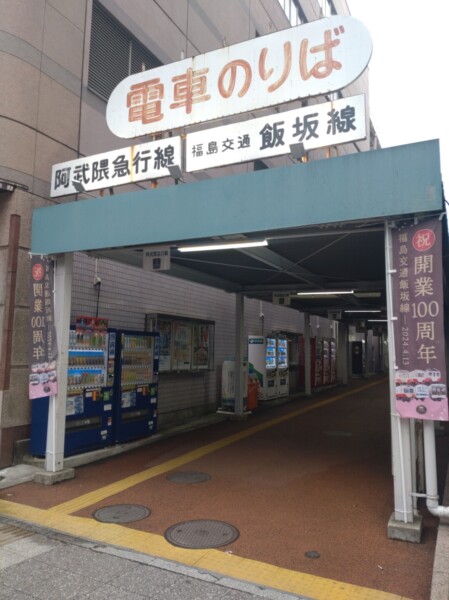
The Iizaka Line starts at Fukushima Station, which is also served by JR's Tohoku Main Line, Tohoku Shinkansen, and Yamagata Shinkansen, but its platforms are separate from the JR lines.
Next to the JR station building at Fukushima Station, you'll find the Fukushima Transportation Iizaka Line and Abukuma Express Line platforms.
*Abukuma Express Line: A railway line that runs 54.9 km from Fukushima Station to Tsukinoki Station in Shibata Town, Miyagi Prefecture, passing through Yanagawa Station, Marumori Station, etc
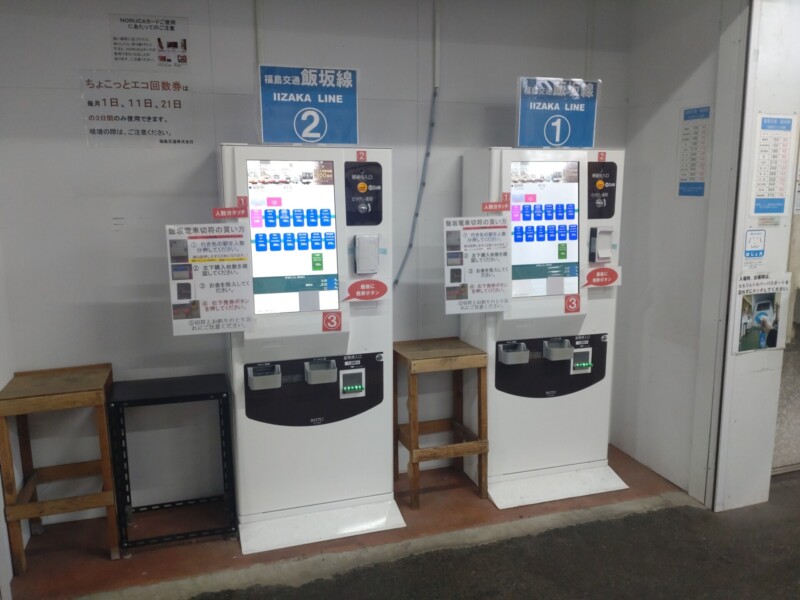
Tickets for the Iizaka Line can be purchased from automatic ticket vending machines like this one.
Please note that national transport IC cards such as Suica cannot be used on the Iizaka Line.
NORUCA , an IC card issued independently by Fukushima Transportation, can be used.
There is also an 800 yen "Ii Den 1-Day Free Ticket" available, which allows one adult, one elementary school student, and up to two infants unlimited travel on the Iizaka Line for one day, plus access to the public baths and special offers at stores along the line
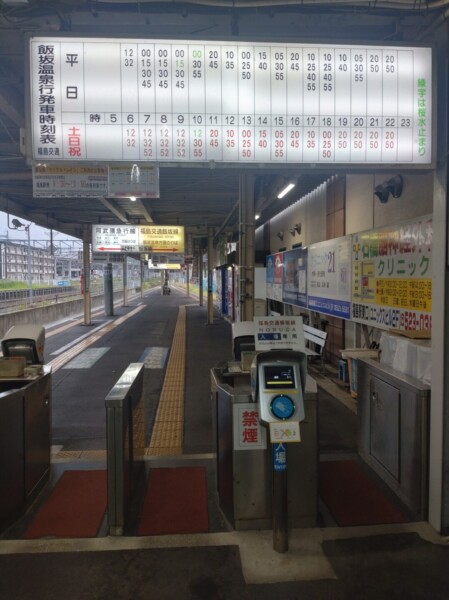
The Iizaka Line and Abukuma Express Line share the same entrance, ticket gates, and platform.
After passing through the ticket gate, the platform on the right is for the Iizaka Line, and the platform on the left is for the Abukuma Express Line.
Because they both start from Fukushima Station and share platforms, the Fukushima Transportation Iizaka Line and the Abukuma Express Line may be thought of as similar railways, but their origins are completely different
As you can see in this article, Fukushima Kotsu has always a privately run railway operator .
The power source (electricity on overhead wires) used to run the trains is 1,500V DC, the same as is common for private railways in Japan.
a third-sector railway operator that was established in the 1980s, taking over the former JNR Marumori Line and lines that were under construction .
Although it is a joint-stock company, it is funded by Fukushima Prefecture, Miyagi Prefecture, Fukushima Transportation, Fukushima City, Date City, and others.
strictly speaking , it cannot be called a private railway because it is funded by the prefecture and city .
The relationship between Abukuma Express and JR, the successor to the Japanese National Railways, remains unbroken to this day, and Abukuma Express trains depart Fukushima Station and run on the JR Tohoku Main Line for 4.7km to the junction called Yanome Signal Station.
Also, on the Miyagi side, trains run from Tsukinoki Station onto the Tohoku Main Line and run to Sendai Station.
Due to this relationship, the electrification system is the same as the Tohoku Main Line, 50Hz, 20,000V AC.
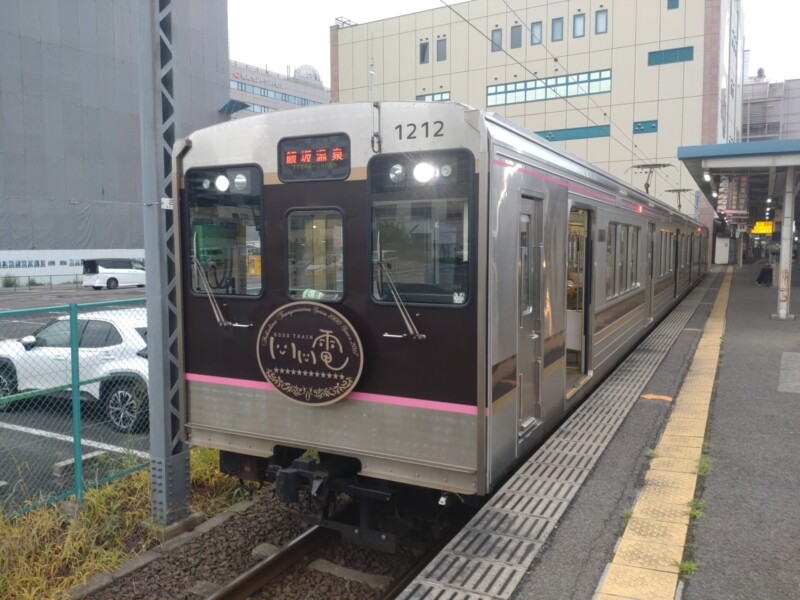
I took the first train leaving Fukushima Station in the morning.
Trains on the Iizaka Line are either three-car or two-car configurations, and the first train I took had just been reduced to two cars on August 5th.
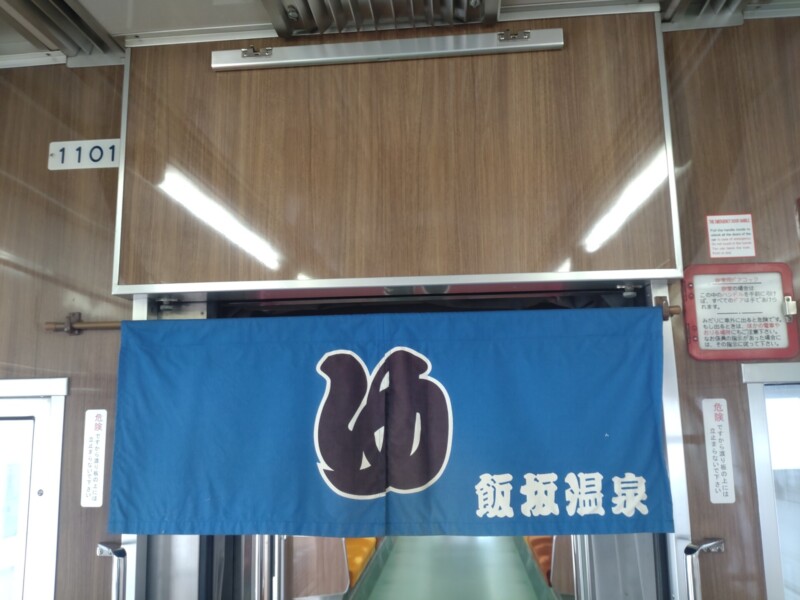
There are also carriages with curtains hanging inside that say Iizaka Onsen
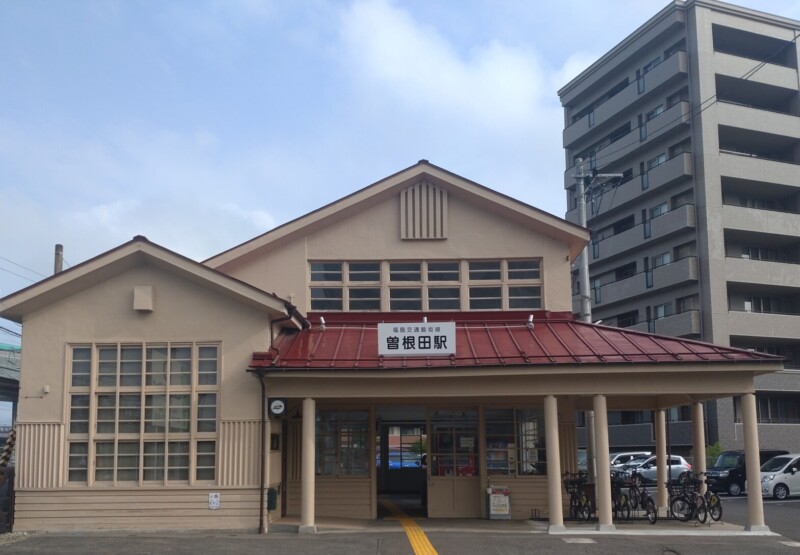
At Soneda Station, next to Fukushima Station, the station building that was constructed when the station moved to its current location in 1942 is still in use today .
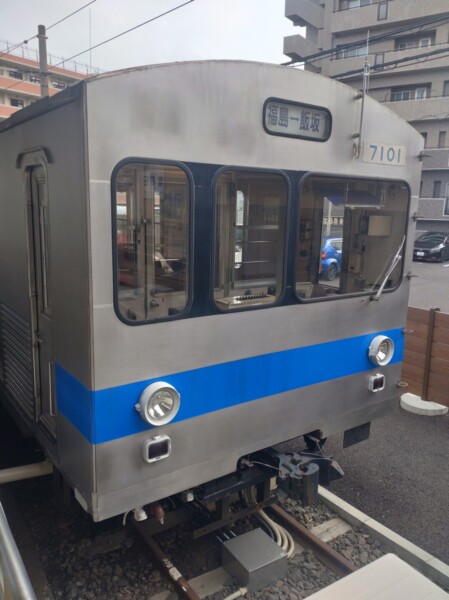
A retired 7000 series train has been preserved on the premises, and its interior is open to the public as "Nanasen Rest Area."
The first car of the two-car train is a rest area with interior decor from when it was in operation, while the second car is a working space, equipped with power outlets and Wi-Fi .
While the Nanasen Rest Area itself is free to use, you will need a valid Iizaka Line ticket or a Soneda Station admission ticket.
are dotted with interesting sights " Bijutsukan Toshokanmae Station ," which, as the name suggests, the Fukushima Prefectural Museum Sakuramizu Station ,"
which is a popular stop for train enthusiasts as it " Ioji-mae Station ,"
Ioji Temple , the family temple of the Sato clan, which gave birth to the Sato brothers Tsugunobu and Tadanobu, who followed Minamoto no Yoshitsune .
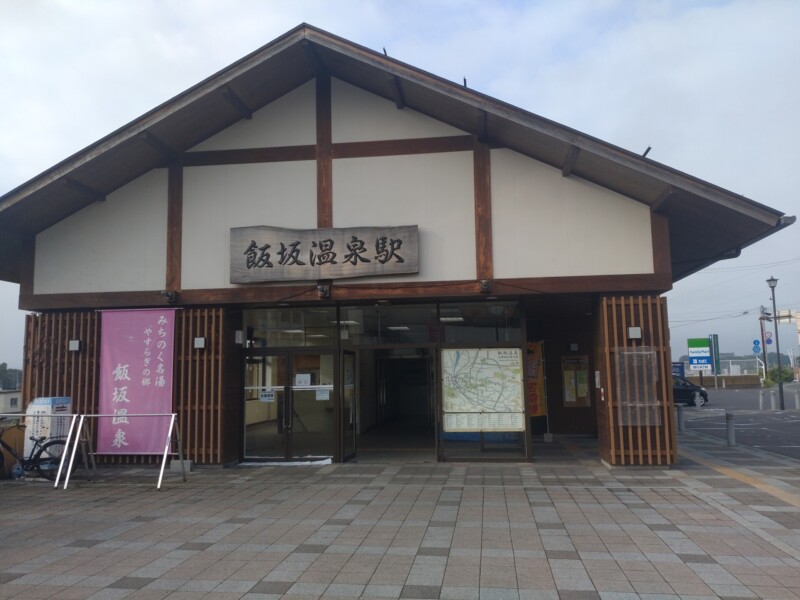
After about 25 minutes on the train from Fukushima Station, you will arrive at the last stop, Iizaka Onsen Station.
The station building has an atmosphere befitting a hot spring resort.
a famous hot spring with a long history , is located right outside the station .
There are plenty of public baths and free foot baths, so you can easily enjoy the hot springs.
summary
The Iizaka Line has been transporting many commuters, students, and tourists for 100 years
, and will continue to fulfill that role in the future.
there is a "Cycle Train" that allows passengers to bring their own bicycles on board during the day , and there are also rental bicycles available at Iizaka Onsen Station, so there are many ways to enjoy sightseeing along the line.
Why not take the Iizaka Line on a journey to discover the charms of Fukushima and Iizaka?


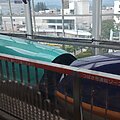


![A day trip to Iizaka Onsen on the Fukushima Kotsu Iizaka Line (Iiden) from Fukushima Station! [Fukushima Prefecture] Disk dumplings from Hobaraya Shokudo](https://jp.neft.asia/wp-content/uploads/2024/01/PXL_20231029_053137111-150x150.jpg)
![[Koriyama City, Fukushima Prefecture] What is the lucky park that was built in Kaiseiyama Park, a famous spot for cherry blossoms? rakki-kouenn](https://jp.neft.asia/wp-content/uploads/2023/03/rakki-kouenn-150x150.jpg)
![New Morioka specialty! I tried riding the Kitakami River boat transport experience attraction "Moriokamaru"! [Iwate Prefecture] Moriokamaru 1](https://jp.neft.asia/wp-content/uploads/2023/07/ea21f2021d5472b65042ad51a700059e-150x150.jpg)

![From Sendai Station to Fukushima City! A two-day, one-night, gourmet trip on a highway bus! [Fukushima Prefecture] Torimasa's Teppanyaki Offal](https://jp.neft.asia/wp-content/uploads/2023/11/PXL_20231028_084834519-150x150.jpg)
